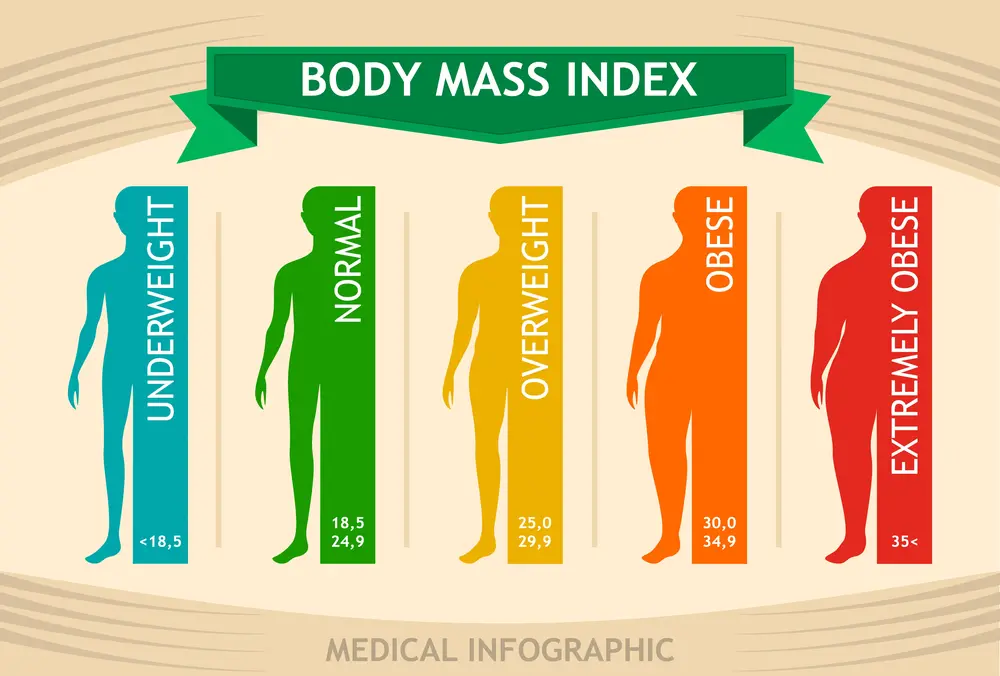Introduction
In today’s fast-paced digital age, the quest for genuine, meaningful connections often feels like a paradox. While technology has brought the world closer, it has also left us yearning for the deep and meaningful interactions that nurture our mental health. But fear not, for the power of connection is a formidable force that can transform lives and create resilient mental health communities.
Unveiling the Digital Age Paradox
In this age of social media and instant messaging, we are paradoxically experiencing heightened feelings of isolation. The very tools designed to connect us have, in many ways, contributed to this sense of loneliness. It’s a stark reminder that authentic connections extend beyond digital avatars and status updates for building strong mental health.
Quote: “In a world of notifications, we’re starving for meaningful conversations.” – Unknown
The Rise of Online Mental Health Communities

While the digital age may have created isolation, it has also given rise to thriving online mental health communities. These virtual spaces, such as support groups, forums, and social media platforms, offer solace, understanding, and invaluable advice. They provide a refuge where individuals can share their mental health journeys without judgment.
Comment: “I found my sanctuary in an online mental health group. It’s where I found the strength to confront my challenges and heal.” – Sarah
The Alchemy of Compassion
At the core of building strong mental health communities lies the alchemy of compassion. It’s the magic that happens when individuals come together with empathy and genuine concern. The chemical reactions in our brains when we feel seen, heard, and valued create an atmosphere conducive to healing and personal growth.
Example: Maria, a mental health advocate, has a mantra: “Every act of kindness in our community is a drop of healing in someone’s life. Together, we can create a sea of support.”
Top Tips for Community Building

1. Active Listening: The cornerstone of strong mental health communities is active listening. It involves giving someone your full attention, suspending judgment, and validating their feelings. It’s not about having all the answers but being present for someone when they need it most.
2. Empathy as the North Star: Empathy is the emotional glue that binds communities. It’s the ability to step into someone else’s shoes, understand their feelings, and respond with kindness. Empathy is the fuel that powers the connection engine.
3. Destigmatizing Mental Health: A strong mental health community creates a safe space where the stigma surrounding mental health can be challenged. When individuals feel comfortable sharing their experiences without fear of judgment, healing can truly begin.
Quote: “We need to fix our souls. Our souls are broken in this nation.” – Michelle Obama
The Role of Digital Platforms
Digital platforms have revolutionized the creation of mental health communities. Blogs, podcasts, and social media accounts have provided a space for individuals to share their experiences, knowledge, and advice. These platforms help amplify voices and reach those who need support.
Reference: Online mental health communities are discussed in “The Journal of Medical Internet Research” as a significant avenue for mental health support.
Real-World Connection
While online communities are invaluable, real-world connections remain vital. Meeting in person or connecting over the phone can deepen relationships and provide a level of intimacy that digital platforms can’t fully replicate.
4. Supporting Each Other’s Growth: A strong mental health community isn’t just about finding solace in shared struggles. It’s also a place for personal growth. Encourage each other’s ambitions, celebrate achievements, and provide guidance when needed.
5. Maintaining Boundaries: In any community, there’s a need for balance. While supporting each other is crucial, it’s equally important to maintain healthy boundaries. Respecting individual privacy and autonomy is key to fostering trust.
Comment: “This community has not only supported my mental health but also inspired me to chase my dreams. It’s a place where I’ve found understanding and motivation.” – Alex
The Road Ahead
As we conclude our exploration, remember that building strong mental health communities is an art and a science. It’s a delicate tapestry woven with empathy, active listening, and the power of shared experiences. The digital age has opened up new avenues for connection, but the essence remains the same—fostering a safe space where individuals can find support, understanding, and personal growth.
Example: “I used to think I was alone in my struggles. But this community has shown me that I’m never truly alone. We’re a family of strength and resilience.” – Emily
In this interconnected world, the bonds we form can be a source of profound strength and resilience. The power of connection is not just a concept; it’s a life-changing force that shapes the destinies of individuals and communities alike. Let’s continue to champion the power of connection and create communities that are not just supportive but transformative. Together, we can create a tapestry of hope and resilience.
Conclusion: Building Strong Mental Health
Mental health is a vital aspect of our well-being, and it can be affected by various factors, such as stress, trauma, isolation, stigma, or discrimination. To cope with these challenges and promote positive mental health, it is important to build strong mental health communities that foster connection, support, and empowerment. Some of the top tips for building such communities are:
- Reach out to others who share your experiences, interests, or goals, and form meaningful relationships
- Join or create groups, clubs, or organizations that focus on mental health awareness, advocacy, or education
- Participate in activities that enhance your physical, emotional, and social wellness, such as exercise, hobbies, or volunteering
- Seek professional help when needed, and encourage others to do the same
- Be respectful, compassionate, and inclusive of people from diverse backgrounds, cultures, and perspectives
By following these tips, you can contribute to creating a culture of mental health that values connection, collaboration, and compassion.
FAQs
Q: What are the benefits of connecting with others who have similar mental health experiences?
A: Connecting with others who have similar mental health experiences can help you feel less alone, more understood, and more hopeful. You can also learn from each other’s coping strategies, insights, and resources, and provide mutual support and encouragement.
Q: How can I find or create a mental health community that suits my needs and preferences?
A: There are many ways to find or create a mental health community that suits your needs and preferences, such as:
- Searching online for existing groups, forums, or platforms that focus on your specific mental health condition, issue, or goal
- Asking your health care provider, counselor, or therapist for referrals or recommendations
- Reaching out to your friends, family, or acquaintances who may have similar experiences or interests, and inviting them to join or start a group with you
- Exploring your local community for opportunities to join or organize events, workshops, or campaigns related to mental health
Q: What are some examples of activities that can enhance my mental health and well-being?
A: Some examples of activities that can enhance your mental health and well-being are:
- Physical activities, such as walking, jogging, cycling, swimming, or dancing, that can boost your mood, energy, and self-esteem
- Creative activities, such as painting, writing, singing, or playing an instrument, that can express your emotions, thoughts, and ideas
- Relaxing activities, such as meditation, yoga, breathing exercises, or reading, can calm your mind, body, and spirit
- Social activities, such as chatting, playing games, or watching movies, can strengthen your bonds, communication, and trust with others
- Meaningful activities, such as volunteering, mentoring, or donating, that can make a positive difference in your community and yourself
Q: How can I seek professional help for my mental health, and what are the options available?
A: Seeking professional help for your mental health is a sign of strength, not weakness, and it can help you overcome your challenges and achieve your goals. Some of the steps to seek professional help are:
- Recognize your symptoms, needs, and expectations, and be honest with yourself and others
- Talk to someone you trust, such as a friend, family member, or teacher, and ask for their support and guidance
- Research the different types of mental health services and providers, such as psychiatrists, psychologists, counselors, or social workers, and compare their qualifications, costs, and availability
- Contact the provider or service of your choice, and schedule an appointment or consultation
- Prepare for your first session, and bring any relevant information, such as your medical history, medications, or questions
- Follow the treatment plan, and monitor your progress and feedback
Q: How can I be respectful, compassionate, and inclusive of people from diverse mental health backgrounds, cultures, and perspectives?
A: Being respectful, compassionate, and inclusive of people from diverse mental health backgrounds, cultures, and perspectives can help you build trust, understanding, and harmony with others. Some of the ways to do so are:
- Listen actively and empathically, and avoid interrupting, judging, or dismissing others
- Ask open-ended and respectful questions, and avoid making assumptions, stereotypes, or generalizations
- Share your own experiences and opinions, and avoid imposing, criticizing, or blaming others
- Acknowledge and appreciate the differences and similarities among people, and avoid comparing, ranking, or excluding others
- Learn and use appropriate and respectful language, terms, and labels, and avoid using offensive, derogatory, or stigmatizing words or expressions




 Afrikaans
Afrikaans Albanian
Albanian Amharic
Amharic Arabic
Arabic Armenian
Armenian Azerbaijani
Azerbaijani Basque
Basque Belarusian
Belarusian Bengali
Bengali Bosnian
Bosnian Bulgarian
Bulgarian Catalan
Catalan Cebuano
Cebuano Chichewa
Chichewa Chinese (Simplified)
Chinese (Simplified) Chinese (Traditional)
Chinese (Traditional) Corsican
Corsican Croatian
Croatian Czech
Czech Danish
Danish Dutch
Dutch English
English Esperanto
Esperanto Estonian
Estonian Filipino
Filipino Finnish
Finnish French
French Frisian
Frisian Galician
Galician Georgian
Georgian German
German Greek
Greek Gujarati
Gujarati Haitian Creole
Haitian Creole Hausa
Hausa Hawaiian
Hawaiian Hebrew
Hebrew Hindi
Hindi Hmong
Hmong Hungarian
Hungarian Icelandic
Icelandic Igbo
Igbo Indonesian
Indonesian Irish
Irish Italian
Italian Japanese
Japanese Javanese
Javanese Kannada
Kannada Kazakh
Kazakh Khmer
Khmer Korean
Korean Kurdish (Kurmanji)
Kurdish (Kurmanji) Kyrgyz
Kyrgyz Lao
Lao Latin
Latin Latvian
Latvian Lithuanian
Lithuanian Luxembourgish
Luxembourgish Macedonian
Macedonian Malagasy
Malagasy Malay
Malay Malayalam
Malayalam Maltese
Maltese Maori
Maori Marathi
Marathi Mongolian
Mongolian Myanmar (Burmese)
Myanmar (Burmese) Nepali
Nepali Norwegian
Norwegian Pashto
Pashto Persian
Persian Polish
Polish Portuguese
Portuguese Punjabi
Punjabi Romanian
Romanian Russian
Russian Samoan
Samoan Scottish Gaelic
Scottish Gaelic Serbian
Serbian Sesotho
Sesotho Shona
Shona Sindhi
Sindhi Sinhala
Sinhala Slovak
Slovak Slovenian
Slovenian Somali
Somali Spanish
Spanish Sundanese
Sundanese Swahili
Swahili Swedish
Swedish Tajik
Tajik Tamil
Tamil Telugu
Telugu Thai
Thai Turkish
Turkish Ukrainian
Ukrainian Urdu
Urdu Uzbek
Uzbek Vietnamese
Vietnamese Welsh
Welsh Xhosa
Xhosa Yiddish
Yiddish Yoruba
Yoruba Zulu
Zulu